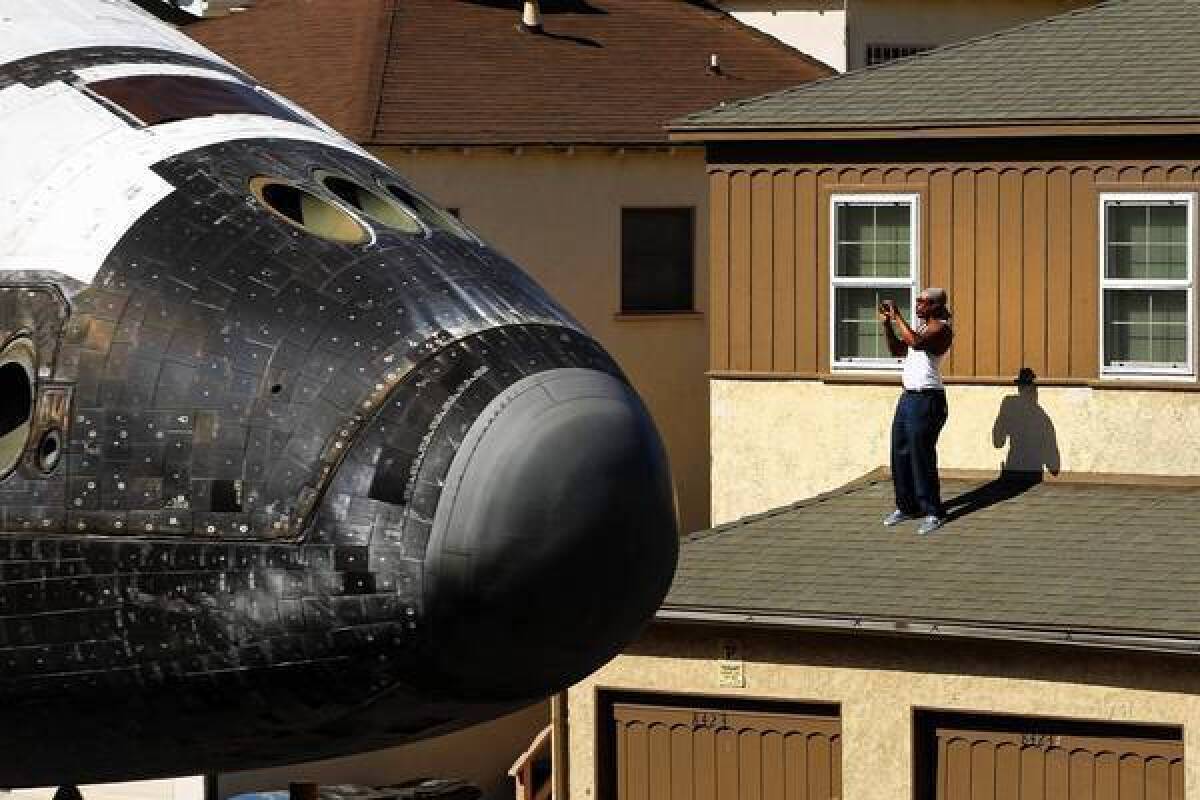NASA on verge of losing its edge, report says

- Share via
Years of trying to do too many things with too little money have put NASA at risk of ceding leadership in space exploration to other nations, according to a new report that calls on the space agency to make wrenching decisions about its long-term strategy and future scope.
As other countries — including some potential adversaries — are investing heavily in space, federal funding for NASA is essentially flat and under constant threat of being cut. Without a clear vision, that fiscal uncertainty makes it all the more difficult for the agency to make progress on ambitious goals like sending astronauts to an asteroid or Mars while executing big-ticket science missions, such as the $8.8-billion James Webb Space Telescope, says the analysis released Wednesday by the National Research Council.
“These problems are not primarily of NASA’s doing, but the agency could craft a better response to the uncertainty,” wrote the report’s authors, a group of 12 independent experts led by former UCLA Chancellor Albert Carnesale. “If the United States is to continue to maintain international leadership in space, it must have a steady, bold, scientifically justifiable space program in which other countries want to participate, and, moreover, it must behave as a reliable partner. Despite decades of U.S. leadership and technical accomplishment, many of these elements are missing today.”
The report, commissioned by NASA at the behest of Congress, said the agency lacked a long-range agenda that enjoyed widespread support from government and the public. The authors also made plain that many of the problems boiled down to money.
“NASA cannot execute a robust, balanced aeronautics and space program given the current budget constraints,” it warns. “There is a significant mismatch between the programs to which NASA is committed and the budgets that have been provided or anticipated. ... This mismatch needs to be addressed if NASA is to efficiently and effectively develop enduring strategic directions of any sort.”
To that end, the committee laid out four options for getting NASA’s goals in line with its resources. It acknowledged that the most appealing plan — getting more money from Congress — was “unlikely given the current outlook for the federal budget.” Other possibilities include relying more on partnerships with other countries and private companies; undertaking an “aggressive restructuring program” that eliminates jobs and facilities; or giving up one of its main focus areas, such as the astronaut program or its studies of deep space.
The report’s authors did not weigh in on which course NASA should choose. But they emphasized that Congress and the White House couldn’t afford to ignore an uncomfortable truth: “NASA’s distribution of resources may be out of sync with what it can achieve relative to what it has been asked to do.”
Close watchers of the space agency said the report summarized NASA’s predicament well.
“I thought it was rather grim reading, but accurate,” said Scott Pace, director of the Space Policy Institute at George Washington University, who worked at NASA during the George W. Bush administration.
The report comes a year after the space shuttle fleet’s retirement, leaving the agency with no clear agenda for its flagship human spaceflight division. The current objectives — to send astronauts to an asteroid by 2025 and a manned mission to Mars in the 2030s — have been criticized by some experts as risky and remote possibilities. Even within NASA, there is no widespread consensus that these goals make sense, the report said.
In preparing their report, committee members visited NASA’s 10 field centers around the country, including the Jet Propulsion Laboratory in La Canada Flintridge, which is managed by Caltech. They also ran an online survey that drew nearly 800 responses.
What they found was little interest in a manned asteroid mission, either inside or outside the agency, Carnesale said.
And in spite of President Obama’s call for a manned mission to Mars in the next 20 to 30 years, there’s more of an international appetite for revisiting the moon, Pace said.
That opinion will matter a great deal if the agency chooses to reduce costs by forging more international partnerships. Gone are the Cold War days when NASA was flush and the United States could set its own agenda without significant input from foreign partners, the report said.
But some worried that ceding more control of such missions to other nations could ultimately sap support for NASA.
“The national space program is really a nationalist kind of thing,” said Alden Munson, senior fellow at the Potomac Institute for Policy Studies, a science and technology think tank based in Arlington, Va. By making such missions international collaborations, “you kind of lose political support.”
By stretching itself so thin, NASA has often wound up with missions that take much longer than planned, which drives up the price.
“They cost more, they take longer, and they’re riskier,” Carnesale said. “And we’re dragging them out because NASA plays with the one variable that it has control over: time.”
NASA officials should also take more initiative in managing the 10 centers as a more efficient, integrated system, he said. But at the moment, the agency doesn’t have much flexibility to make changes to its structure or its personnel. For example, the law forbids NASA from cutting any civil servant jobs, but Congress could change that, he said.
But making changes to NASA’s infrastructure is easier said than done, said Scott Hubbard, former director of NASA’s Mars program, who is now a professor at Stanford University. He pulled out an easy example.
“Attempting to close a NASA center has been tried over and over again,” he said. “It’s never worked.”
More to Read
Sign up for Essential California
The most important California stories and recommendations in your inbox every morning.
You may occasionally receive promotional content from the Los Angeles Times.











